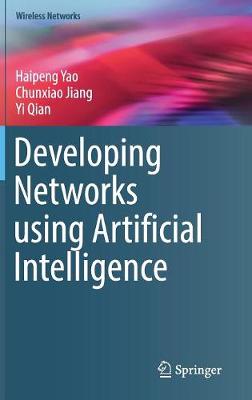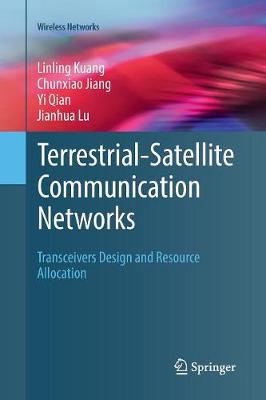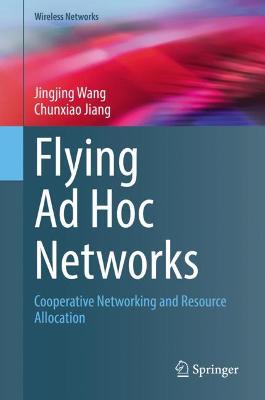Wireless Networks
3 total works
Developing Networks using Artificial Intelligence
by Haipeng Yao, Chunxiao Jiang, and Yi Qian
This book mainly discusses the most important issues in artificial intelligence-aided future networks, such as applying different ML approaches to investigate solutions to intelligently monitor, control and optimize networking. The authors focus on four scenarios of successfully applying machine learning in network space. It also discusses the main challenge of network traffic intelligent awareness and introduces several machine learning-based traffic awareness algorithms, such as traffic classification, anomaly traffic identification and traffic prediction. The authors introduce some ML approaches like reinforcement learning to deal with network control problem in this book.
Traditional works on the control plane largely rely on a manual process in configuring forwarding, which cannot be employed for today's network conditions. To address this issue, several artificial intelligence approaches for self-learning control strategies are introduced. In addition, resource management problems are ubiquitous in the networking field, such as job scheduling, bitrate adaptation in video streaming and virtual machine placement in cloud computing. Compared with the traditional with-box approach, the authors present some ML methods to solve the complexity network resource allocation problems. Finally, semantic comprehension function is introduced to the network to understand the high-level business intent in this book.
With Software-Defined Networking (SDN), Network Function Virtualization (NFV), 5th Generation Wireless Systems (5G) development, the global network is undergoing profound restructuring and transformation. However, with the improvement of the flexibility and scalability of the networks, as well as the ever-increasing complexity of networks, makes effective monitoring, overall control, and optimization of the network extremely difficult. Recently, adding intelligence to the control plane through AI&ML become a trend and a direction of network development
This book's expected audience includes professors, researchers, scientists, practitioners, engineers, industry managers, and government research workers, who work in the fields of intelligent network. Advanced-level students studying computer science and electrical engineering will also find this book useful as a secondary textbook.
Terrestrial-Satellite Communication Networks
by Linling Kuang, Chunxiao Jiang, Yi Qian, and Jianhua Lu
This book targets major issues in terrestrial-satellite communication networks and presents the solutions. While the terrestrial networks can achieve high-speed data service at low cost, satellite based access is one way to complement terrestrial based networks to ensure ubiquitous, 100% geographic coverage. The coexistence and cooperation between terrestrial and satellite networks are of great potential in future communication networks, and satellite radio access networks has already been considered in the fifth-generation (5G) networks to be supported for phase 2. Therefore, it is important to study the architectures of terrestrial-satellite networks, as well as the possible techniques and challenges.
The authors introduce the technique of beamforming in satellite communication systems, which is an efficient transmitting method for multiple access, and they discuss the main challenges as well as prospective applications. The authors introduce possible methods for interference cancelation reception in terrestrial-satellite communication networks when reusing the frequency band between the two networks. Due to the limitation of spectrum resources, spectrum sharing will become one of the important issues in terrestrial-satellite communication networks. The problems of spectrum coexistence between GEO and Terrestrial Systems and between GEO and NEGO systems are also discussed. Finally, taking both the two system into consideration, the resource allocation problem will be more complex due to the coupling between resources and the interference. Based on this, the authors propose several resource allocation schemes in different scenarios of terrestrial-satellite communication networks, which can optimize the capacity performance of the system. The expected audience for this book includes (but not limited to) graduate students, professors, researchers, scientists, practitioners, engineers, industry managers, and government researchers working in the field of satellite communications and networks.The expected audience for this book includes (but not limited to) graduate students, professors, researchers, scientists, practitioners, engineers, industry managers, and government researchers working in the field of satellite communications and networks.
Relying on unmanned autonomous flight control programs, unmanned aerial vehicles (UAVs) equipped with radio communication devices have been actively developed around the world. Given their low cost, flexible maneuvering and unmanned operation, UAVs have been widely used in both civilian operations and military missions, including environmental monitoring, emergency communications, express distribution, even military surveillance and attacks, for example. Given that a range of standards and protocols used in terrestrial wireless networks are not applicable to UAV networks, and that some practical constraints such as battery power and no-fly zone hinder the maneuverability capability of a single UAV, we need to explore advanced communication and networking theories and methods for the sake of supporting future ultra-reliable and low-latency applications. Typically, the full potential of UAV network's functionalities can be tapped with the aid of the cooperation of multiple drones relying on their ad hoc networking, in-network communications and coordinated control. Furthermore, some swarm intelligence models and algorithms conceived for dynamic negotiation, path programming, formation flight and task assignment of multiple cooperative drones are also beneficial in terms of extending UAV's functionalities and coverage, as well as of increasing their efficiency. We call the networking and cooperation of multiple drones as the terminology 'flying ad hoc network (FANET)', and there indeed are numerous new challenges to be overcome before the idespread of so-called heterogeneous FANETs. In this book, we examine a range of technical issues in FANETs, from physical-layer channel modeling to MAC-layer resource allocation, while also introducing readers to UAV aided mobile edge computing techniques.


